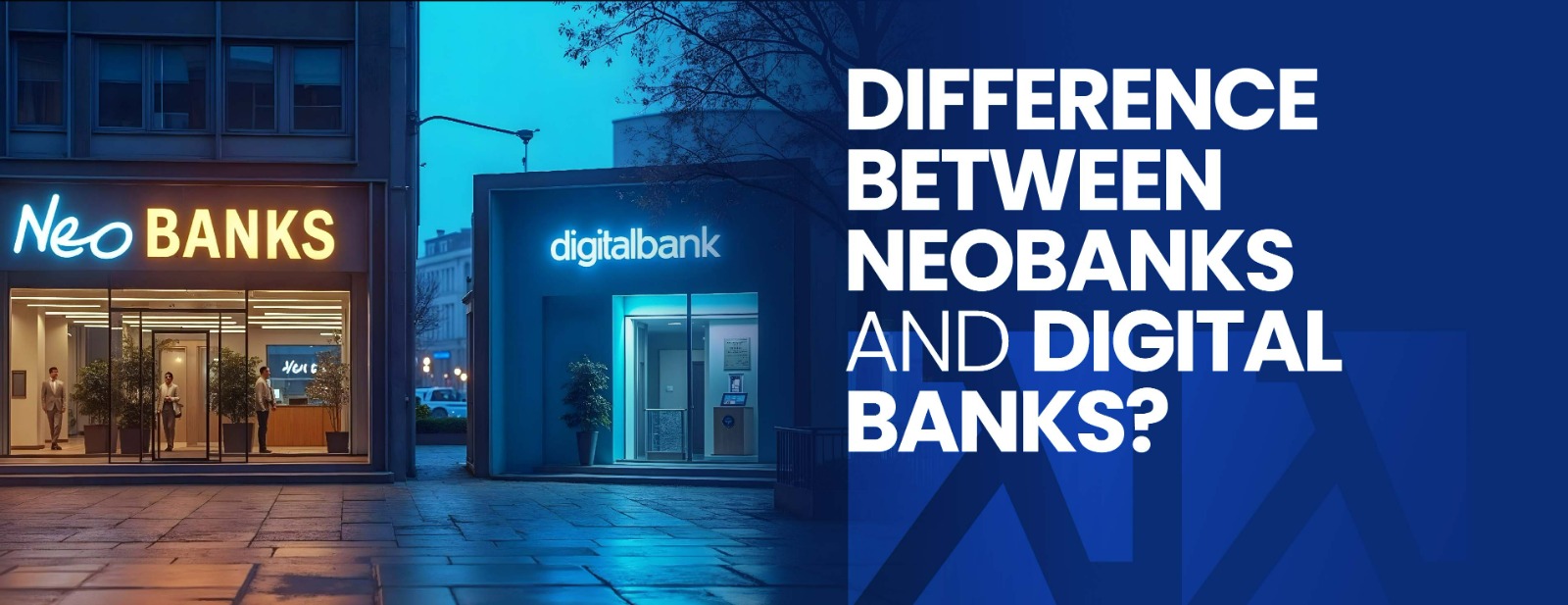The banking industry is facing many challenges. Among them is the digitization of the financial sector. This is an evolution that is needed and has led to new players in banking, such as digital banks or neo-banks.
In recent years, they have become more prominent and have managed to take their place in the financial landscape. But what are the differences between digital banks and neo-banks?
What are Digital Banks and Neo Banks?
Digital banking, commonly referred to as online banking, is a digitization of usual banking services. It denotes the set of banking services and functionalities developed by universal banks. Thus, a digital bank is systematically backed by a conventional bank. It offers an offer dematerialized of equivalent quality as that proposed by the bank’s “classics” but does not have physical branches. This particularity allows the digital bank to respond to new digital uses while offering its customers the stability of a universal bank with attractive prices that digitalization allows.
Some Digital banking examples include DBS Digi Bank (Singapore, Indonesia); CIMB OCTO (Malaysia, Indonesia, Philippine).
A neo bank is a type of Fintech company offering digital and mobile solutions for managing payments, money transfers, and financial analysis. It is an online-only financial institution, and most of them boast 100% mobile access. Neo banking market was valued at USD 98.40 billion in 2023 and it is expected that from USD 143.29 billion in 2024, the industry would develop to USD 3,406.47 billion by 2032, compounding at a CAGR of 48.6% during the forecast period. Some Neo banking examples are RazorpayX (India); Monzo, Starlingbank (UK); Toss Bank (South Korea).
Differences Between the Two
1. Different Status
Since a digital bank is attached to a universal bank, it therefore possesses a banking license, which others would refer to as a license from a credit institution. The license is provided by the ACPR backed by the Bank of France, responsible for approving and monitoring banking and insurance institutions and their brokers. Thanks to this banking license, an online customer will be accorded the same range of services with the same guarantees accorded by any other conventional bank.
NEO-banks are not born with a credit institution license. NEO-banks are thus payment institutions but not, in the strictest sense of the word, banks. As indicated again in April 2021 by the ACPR, “The qualification of bank-and therefore neo bank-can only apply to financial agents holding a license as a Credit Institution”, such as NEO banks N26 and Revolut. Despite such precision, neo bank designates de facto digital establishments which do not have banking status. It would be the case, for example, of Manager. one, Green-Got, or else Pixpay.
2. Different Organization
Digital banks and neo-banks refer to different types of organizations. The former was created by large banking institutions Banque Postale, Crédit Agricole, BNP., while the latter are fintechs. Each one has its culture and its processes.
3. Different Banking Services
Another big difference between a digital bank and a neo-bank, understood in both the legal meaning of the term from the ACPR and in the broad sense, is their scope of services.
As much as online banks are genuine banks, they master and offer a range of products similar to traditional banking institutions: bank accounts, bank cards, checkbooks, credit, savings, life insurance, and stock market.
Neo-banks are usually limited to bank accounts and cards. In general, the services offered are more limited. No checkbook, no authorized overdraft, no credit or savings offers, only bank cards with systematic authorization and only sometimes cash or check deposits are the primary differences in service.
4. Deadlines and Conditions
Although the account opening is speedy with digital banks, they generally require guarantees from their future customers. Thus, the latter will have to fill in some forms, provide information about their revenues, and also go through some identity verification procedures. Neo-banks usually follow simple account opening, available immediately without any income requirements.
5. Different Media Usage
It is digital banks that were created to facilitate account opening and financial management by universal banks. Their initial support is, therefore, the computer. They then adapted to the new digital uses to widen their support of use: mobile and tablet.
Neo-banks have been focusing more recently on mobile applications. Some of them are not available on computers, such as Revolut.
The target clientele is thus different; neo banks target the generations with smartphones and not the under-thirties, as for digital banks.
Change the Way You Bank with Lambda Payments
Lambda Payments’ White Label Neo Banking products represent the next generation of banking. Our platform is designed to meet the expectations of today’s digital age, providing a comprehensive, secure, and user-friendly banking experience that puts you in control of your financial future.
Our digital banking core includes all of the necessary modules for account management, security, card issuance, lending, rewards, and reporting, as well as white-label applications to create a digital banking service.
We give your financial institution access to state-of-the-art technology, robust security protocols, an easy-to-use interface, and a secure platform that supports digital transformation and boosts competitiveness. We comprehend the business/user side of things as well as the platform. Based on our expertise as a solution provider and wallet operator, we will collaborate with you as a partner as well as a solution provider, offering all necessary assistance.







